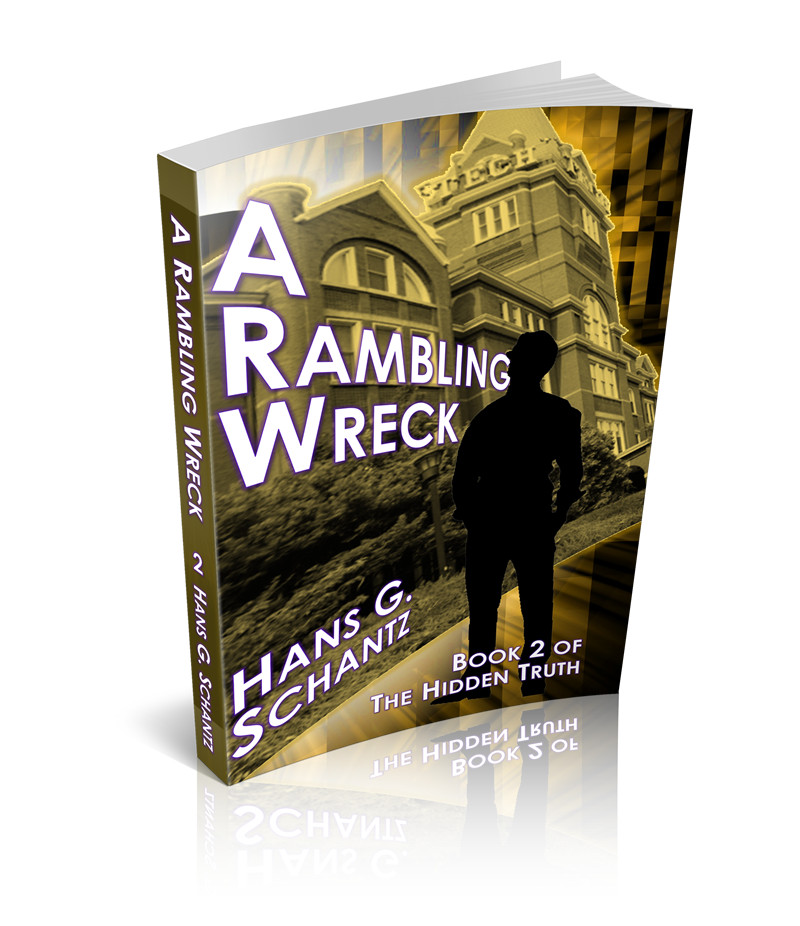 The Hidden Truth – Chapter 6 Notes
The Hidden Truth – Chapter 6 Notes
These notes are loaded with spoilers and further explanation for Chapter 6 of my forthcoming science fiction techno-thriller – The Hidden Truth. I suggest you read Chapter 6 first before continuing. Ready? Let’s begin.
This chapter is why The Hidden Truth is set near Knoxville, Tennessee instead of closer to my hometown of Huntsville, Alabama. Even before the Great Depression and the era of the New Deal Brain Trust, a kind of “scientific socialism” came into vogue – the idea that the power of the state should be applied for the greater social good. And who better to wield this awesome power than the well-educated, prosperous elite who know best how to run and manage the lives of the ignorant hicks and hillbillies surrounding them?
Knoxville, Tennessee was ground zero for this notion. From the creation of Great Smoky Mountain National Park, through the Tennessee Valley Authority (TVA), to the establishment of the Oak Ridge National Lab, Tennessee elites showed no hesitation in dispossessing small property owners on behalf of a “social good” curiously well aligned with the elite’s own personal interests.
It began in the 1920s with the creation of Great Smoky Mountain National Park. The narrator’s family history in “The Cove” closely parallels real-life events in Cades Cove. An elaborate deception campaign lulled Cades Cove residents into a false sense of security as momentum grew to confiscate their property for the proposed park.
Although it is evident that park promoters intended to include Cades Cove within park boundaries almost from the beginning of the movement, they launched an elaborate campaign to assure cove citizens that their homes and farms would never be molested. Carlos Campbell befriended [John] Oliver, using his tourist cabins to show prospective park supporters the beauty of the cove and surrounding mountains. Warning might have been taken from the fact that every major group shown the Great Smokies, from national and state legislators to John D. Rockefeller, Jr., were taken to Cades Cove. But Campbell and others on the Park Commission reiterated over and over their promises that private homes would not be taken over by the proposed park. [Durwood Dunn, Cades Cove…]
Senator Lawrence D. Tyson issued a statement that appeared in the Knoxville Journal on May 9, 1926:
“I have noticed reports to the effect that the people within the boundary which is proposed to be taken in for the Great Smokey Mountain park are somewhat disturbed over the situation, feeling that they may be compelled to sell their land and to move out of the area within the boundary and be put to other inconvenience thereby.
“The bill which has been introduced for this proposed park in the senate and house carries no authority whatever to move anyone, and there is no authority whatever for buying any land or of doing anything in regard to the land except to receive it as a donation. No person within the boundary limits so far as any authority is contained in this bill, is compelled to move or in any way to be disturbed – nor their land taken over under this bill.
“I do not understand how such a rumor could have gotten out.”
Despite assurances like this from Senator Tyson as well as Governor Peay, the state of Tennessee implemented eminent domain proceedings on the Cades Cove property owners soon thereafter. Some legal challenges managed to slow down proceedings for a couple of years. Other property owners agreed to sell on condition that they be allowed to lease back their property – promises made by the state of Tennessee that were not necessarily honored by the federal government.
The story of the jonquils – flowers those of us from Yankeedom might refer to as dafodills? That came straight from Durwood Dunn’s account. Even today, apparently, the remains of the Cades Cove pioneers’ flower gardens give rise to a burst of jonquils, roses, and hyacinths in the otherwise empty meadows from which insufficiently picturesque houses were bulldozed by the National Park Service. To learn more, I recommend Durwood Dunn’s excellent book: Cades Cove: The Life and Death of a Southern Appalachian Community 1818-1937.
How improbable is it that the same family could have been dispossessed twice? A documentary about the creation of Oak Ridge National Laboratory notes that there were some unfortunate winners of an eminent domain trifecta – evicted from Cades Cove, at least one family settled again only to be evicted again by the TVA when Norris Dam was built, and then evicted yet again from their third homestead when the Oak Ridge Lab was established. I thought a double eviction was a credible story element given this context. Here’s a short, very informative excerpt from that documentary:
Here’s a collection of the works of Julian Simon. His bet with notorious doomsayer Paul Ehrlich was as described by Mom. If Mom had a longer discussion, she’d probably have also recommended Maurice and Smithson’s The Doomsday Myth. Much of Mom’s experience parallels my memories of growing up as a high school student in the early 1980s. The television news was filled with depictions of the vast number of hungry and homeless people in Reagan’s America, and global catastrophe was right around the corner. The extent of the crisis was grossly over exaggerated, and of course today, an epidemic of obesity poses far greater health hazards than starvation.
Mom’s story of jumping in to save Kira is a retelling of a similar experience the Czarina and I had with one of our daughters. She was standing dangerously close to a bank admiring some fish, I warned her to step back, and she fell in. I have no recollection of any thought process whatsoever. The next thing I knew, I was already in the water fishing her out. The Czarina had similarly jumped in on the other side without waiting to see what I would do.
The Vigilante Author, Robert Bidinotto, advises that a thriller should escalate, ratcheting up the tension linearly, chapter by chapter to the climax. I decided to get fancy and follow his advice, but make my book obey a power law instead of a linear progression – each chapter is twice as exciting as the one to follow. In retrospect, this may not have been the best idea, because the first few chapters increment more gradually. But now that we’re deep into Act 2, each successive chapter ends in a cliffhanger.
Look for Chapter 7: Summer’s End to publish here on Wednesday, May 18.


One thought on “Chapter 6 Notes: Doomsayers and Eminent Domain”